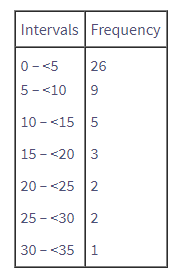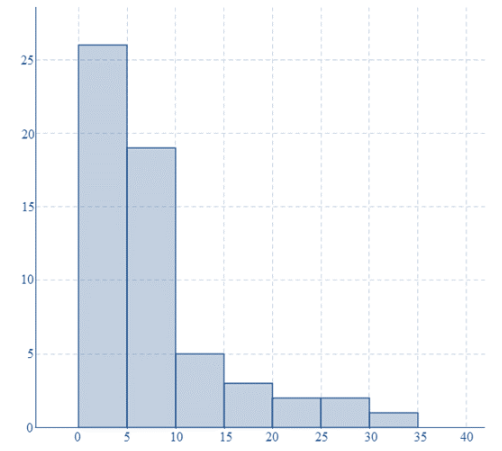Frequency table:
Calculate the frequency of each interval, which is the number of data values that fall within it.
The first value of the first interval is having a width of
Thus,
The first interval is
The interval follows
etc.
The intervals will be established until all of the data values are assigned to exactly one interval.
Frequency Histogram:
Interval bounds must be used to define the bars, and each bar's width must be the same.
Whereas, the height needs to be equal to the frequency.

Spread: In the data set, the weight appears to range from to and in the histogram, it appears to range from to
Shape: The highest bars are on the left of the histogram, with a tail of smaller balls to the right. As a result, the shape will be slanted toward the right.
Outliers: There are no outliers because the histogram has no gaps.
Because it is in the middle of the highest bar, the distribution's center looks to be around








